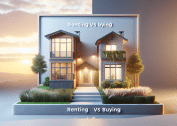Curious about why some properties surge in worth while others stall? This guide explores the surprising factors behind home value changes, market shifts, and how property appraisals influence your equity. Find out which hidden elements can impact the price of your home, and what trends real estate professionals are watching this season.
What Influences Property Prices Most
There is more to property values than meets the eye. While traditional wisdom stresses location, square footage, and curb appeal, current research highlights the growing importance of local amenities, technological upgrades, and even environmental risk factors when it comes to what drives a home’s price. In hot markets, proximity to good schools or public transit has become a major selling point, boosting list prices for homes even in less visually appealing neighborhoods. These trends reflect the way buyers are shifting priorities as urban dynamics evolve and new data becomes available.
Another rising factor is the influence of neighborhood development projects. Whether it’s new retail options, infrastructure improvements, or large employers arriving in town, these elements often spark property value increases as community interest grows. Home buyers increasingly research zoning changes, walkability scores, and long-term urban plans before making an offer in hopes of catching appreciation before prices peak. Even minor upgrades like energy-efficient appliances or flexible workspaces can tip the scale for buyers looking for modern convenience alongside long-term value.
Environmental considerations are now shaping real estate choices in unexpected ways. Properties in flood-prone or fire-susceptible regions may face price pressures, even if they’re otherwise desirable. On the flip side, homes certified for green living, equipped with solar panels, or built with sustainable materials can command premium pricing. The evolving landscape of insurance rates and climate resilience is now woven into the broader story of home price growth, affecting both current value and future sale prospects (https://www.huduser.gov/portal/periodicals/em/fall16/highlight2.html).
Hidden Equity: How Appraisals Affect Your Home’s Worth
Appraisals have long played a vital—but sometimes underestimated—role in real estate transactions. An accurate home appraisal helps ensure fair pricing, limit borrowing risk, and provide the data future property buyers will rely on. What’s surprising is how much these professional valuations can differ, even for seemingly similar properties. Appraisers take into account home upgrades, layout changes, and even trends in local sales that might not be obvious to owners. These differences highlight why it’s important to stay informed about how appraisal methods evolve over time.
Factors like deferred maintenance, outdated fixtures, or, conversely, recent renovations can make or break an appraisal outcome. These details shift appraised value substantially, impacting refinancing options or the ability to secure favorable mortgage terms. Increasingly, appraisers are also using digital tools and automated valuation models to assess comparable sales, which reduces human error but can also amplify small data inaccuracies. The resulting numbers shape not just sale prices but homeowners’ future equity and borrowing capacity in subtle but powerful ways.
Because appraisals aren’t an exact science, property owners sometimes see appraised values come in below—or above—market expectations. Reappraisals or appraisal appeals can be vital if homeowners believe the assigned value misses upgrades or overlooks market trends. Understanding appraisal guidelines and communicating improvements clearly can create a more accurate reflection of true market worth, directly impacting wealth-building potential and the outcome of major transactions (https://www.consumer.ftc.gov/articles/what-know-about-home-appraisals).
Neighborhood Dynamics and Market Trends
Community transformation can spur rapid home value shifts. Neighborhoods undergoing revitalization projects, attracting new businesses, or benefiting from rising local employment tend to see sharper price growth. This happens even if surrounding cities experience stagnant or declining values. Homes within designated opportunity zones, for example, are often eyed for future appreciation because of the potential investment influx, changing the calculus for both buyers and sellers.
Conversely, declining neighborhoods with high vacancy rates or crime concerns may struggle with stagnant values. The local job market and access to health services can have a tangible impact on long-term housing demand and price volatility. Municipal policy changes—like rezoning for multi-family residences or investing in green spaces—often create knock-on effects, transforming the story of entire districts over just a few years. Savvy homeowners and investors closely monitor these details for clues about upcoming shifts in the real estate cycle.
A recent trend is the popularity of walkable communities and “15-minute neighborhoods,” which prioritize access to daily needs within a short distance. Young buyers, in particular, seek out these amenities, driving demand for homes in areas designed around convenience rather than simple square footage. As more cities adopt these planning principles, expect to see continued evolution in what buyers value and how it reflects in asking prices and time on market (https://www.epa.gov/smartgrowth/smart-growth-and-economic-success-investing-better-outcomes).
Amenity Upgrades and Technology’s Surprising Impact
The presence and quality of amenities can significantly shape home values. Pools, landscaped gardens, and updated kitchens remain classics, but technology-driven features are quickly becoming decisive. Smart home systems, security cameras, robust internet connections, and even electric vehicle chargers are increasingly on the checklist for home shoppers. Properties featuring these upgrades often see faster sales and higher offers, reflecting a new set of buyer priorities tied to lifestyle and convenience.
Homes with energy efficiency certifications may command higher resale prices. Digital thermostats, solar panels, optimized insulation, and LED lighting lower ongoing costs—a fact that appeals to both budget-minded and environmentally-aware buyers. Neighborhood-wide fiber optic installations or emerging 5G coverage can boost entire blocks’ value, as remote work and connectivity become essential for more households. The net effect is a new emphasis on adaptability and future-proofing living spaces, with corresponding changes in how properties are marketed and valued.
Some trends are more surprising: indoor air quality systems, water conservation devices, and automated irrigation are now seen as meaningful investments. These upgrades help homes stand out and contribute to a perception of overall better quality and care. As technology continues to advance, agents and appraisers are training to evaluate these amenities consistently, ensuring buyers and sellers understand how such features influence both current marketability and future appreciation (https://www.nar.realtor/research-and-statistics/research-reports/smart-home-products-benefits-and-barriers).
Financing Factors That Influence Property Markets
Interest rates, mortgage access, and lending standards remain core drivers of the real estate market’s health. Shifts in government policy or monetary policy often ripple through the market, influencing whether buyers can borrow affordably and how much they feel comfortable offering. Increasing credit availability or incentives for first-time homebuyers have both been shown to accelerate market activity, leading to quick boosts in home values. Conversely, rate hikes or stricter qualification standards cool markets, sometimes even triggering regional price corrections.
One of the more subtle shifts in recent years is the role of institutional investors and all-cash buyers. When larger investment groups target certain cities, their purchasing power can push up prices for average homebuyers. Regional differences in loan product offerings, down payment programs, and closing cost assistance all contribute to a complex landscape where both supply and demand are continually in flux. Understanding the relationship between policy, lending norms, and value trends is vital for both new and experienced homeowners.
Government initiatives encouraging sustainable building, affordable housing, or infrastructure investment may also influence value. Loan products favoring energy-efficient upgrades mean some buyers can afford higher-priced homes that promise reduced long-term expenses. While this can benefit sellers ready to make upgrades, it also creates new pressures for buyers to balance their wish lists with what’s available through affordable financing programs (https://www.hud.gov/program_offices/housing/sfh/owning/energy-efficient-mortgages).
Location Trends Changing Buyer Decisions
The cliché “location, location, location” remains relevant, but what defines a prime location is shifting. In recent years, buyers have sought not just proximity to city centers, but also access to green space, reputable schools, and diverse amenities. The rise of remote work has made suburban and even rural options more attractive, triggering value jumps in previously overlooked zip codes. These changes reflect larger societal shifts and a widespread desire for both comfort and flexibility in home environments.
Changing transportation habits and the need for multi-modal options are reordering market preferences. Bike paths, ride-share services, and walkable shopping districts allow areas to compete for residents, sometimes outpacing central business districts in price growth. Environmental events—like wildfire, drought, or flooding—also have the capacity to change buyers’ perceptions overnight, reshaping which locations are seen as secure investments. A home’s geography, then, is no longer fixed in value, but instead must be understood in light of climate resilience, infrastructure access, and future planning.
Some buyers prioritize sense of community, local culture, and even political climate when choosing a location. These preferences can create rapid micro-market shifts, with newcomers sparking revitalization in some areas while others see declines as demographics change. The best long-term value often lies in neighborhoods that combine stable infrastructure, cultural richness, and adaptability to future needs (https://www.brookings.edu/articles/how-location-shapes-prosperity-and-inclusion/).
References
1. U.S. Department of Housing and Urban Development. (n.d.). How location affects home value. Retrieved from https://www.huduser.gov/portal/periodicals/em/fall16/highlight2.html
2. Federal Trade Commission. (n.d.). What to know about home appraisals. Retrieved from https://www.consumer.ftc.gov/articles/what-know-about-home-appraisals
3. U.S. Environmental Protection Agency. (n.d.). Smart growth and economic success: Investing in better outcomes. Retrieved from https://www.epa.gov/smartgrowth/smart-growth-and-economic-success-investing-better-outcomes
4. National Association of Realtors. (n.d.). Smart home products: Benefits and barriers. Retrieved from https://www.nar.realtor/research-and-statistics/research-reports/smart-home-products-benefits-and-barriers
5. U.S. Department of Housing and Urban Development. (n.d.). Energy efficient mortgages. Retrieved from https://www.hud.gov/program_offices/housing/sfh/owning/energy-efficient-mortgages
6. Brookings Institution. (n.d.). How location shapes prosperity and inclusion. Retrieved from https://www.brookings.edu/articles/how-location-shapes-prosperity-and-inclusion/









